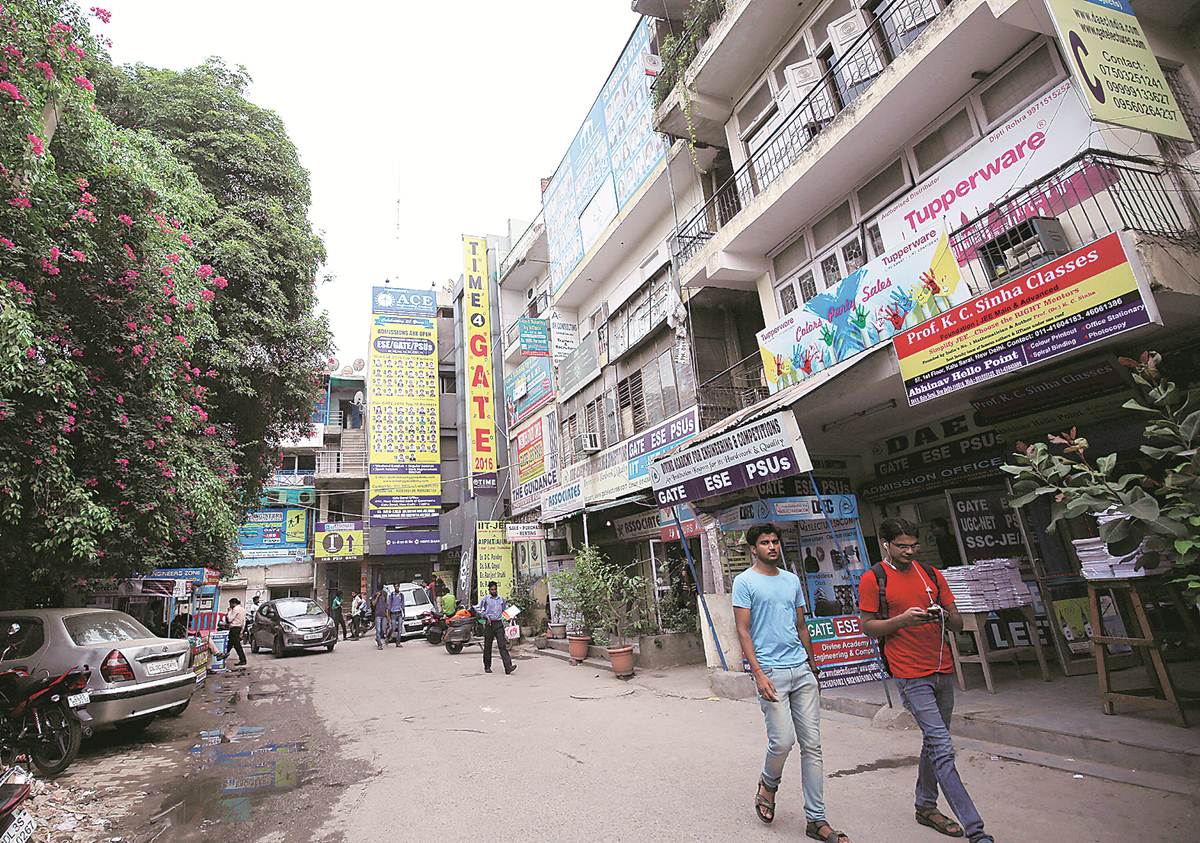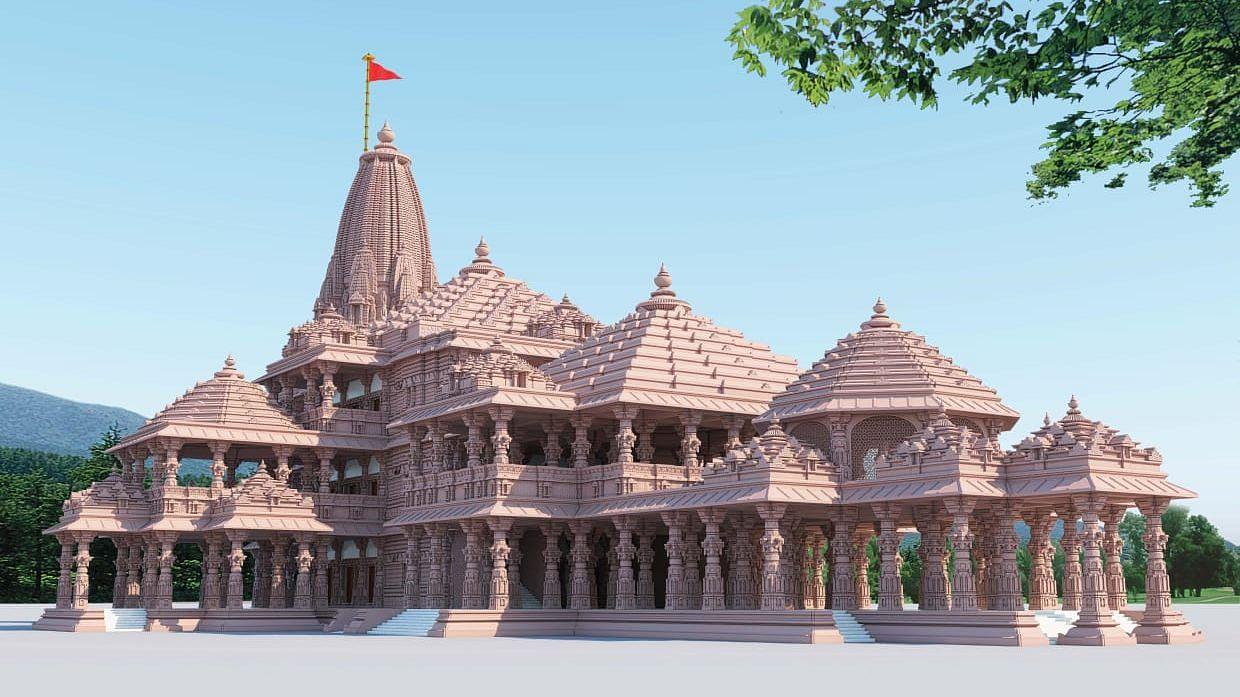‘Global Good Alliance for Gender Equity and Equality’ launched at Davos with support from India (DD)

- 20 Jan 2024
Why is it in the News?
Recently, India announced a new alliance for global good, gender equity, and equality at the World Economic Forum Annual Meeting.
About Global Alliance for Global Good- Gender Equity and Equality:
- It primary aims to unite global best practices, promote knowledge-sharing, and invest in women's health, education, and enterprise.
- It follows the initiatives of the G20 framework, including the Business 20, Women 20, and G20 EMPOWER, building on the commitments of G20 leaders for the global community's benefit.
- Aligned with multiple Sustainable Development Goals (SDGs), such as Good Health and Well-Being (SDG 3), Quality Education (SDG 4), Gender Equality and Empowerment (SDG 5), and Global Partnership for Development (SDG 17), this initiative underscores India's dedication to gender equality in global development.
- Supported by the Bill and Melinda Gates Foundation, anchored by the CII Centre for Women Leadership, and with partnerships from the World Economic Forum and Invest India, the alliance reflects India's commitment to addressing gender-related issues within G20 nations under the principles of 'Vasudhaiva Kutumbakam' and 'Sabka Saath, Sabka Prayaas.'
About the World Economic Forum:
- The World Economic Forum is the International Organization for Public-Private Cooperation.
- The Forum engages the foremost political, business, cultural and other leaders of society to shape global, regional and industry agendas.
- It was established in 1971 by German engineer and economist Klaus Schwab.
- It is a not-for-profit foundation and is headquartered in Geneva, Switzerland.
- The Forum strives in all its efforts to demonstrate entrepreneurship in the global public interest while upholding the highest standards of governance.
Reports released by WEF:
-
- Global Gender Gap Index
- Global Risks Report
- Fostering Effective Energy Transition Report
- Global Cyber Security Outlook
- Global Competitiveness Report
- Travel and Tourism Development Index
Police think tank Bureau of Police Research and Development warns users of scams, data-breach acts on WhatsApp (The Hindu)

- 20 Jan 2024
Why is it in the News?
The Bureau of Police Research and Development (BPRD) has warned users of different scams perpetrated through messaging platform WhatsApp.
About the Bureau of Police Research and Development (BPRD):
- The Bureau of Police Research & Development (BPR&D) was set up in 1970 under the Ministry of Home Affairs to identify the needs and problems of the police in the country.
- It was also mandated to keep abreast of the latest developments in the fields of science and technology, both in India and abroad, to promote the use of appropriate technology in police work.
- Over the years, the BPR&D has also been entrusted with the responsibility of monitoring the training needs and quality of training in the States and Central Police Organisations and assisting the same, as also assisting the States in modernization of the State Police Forces and Correctional Administration.
- In the process, the BPR&D has also been tasked to assist the Ministry of Home Affairs and the CPFs, etc., in the development of Standards, Quality Requirements (QRs), etc., concerning various types of equipment and items about infrastructure.
- More recently, the BPR&D has also been entrusted with the responsibility of anchoring and coordinating the work of the National Police Mission.
BPRD's Roles and Responsibilities:
- The Bureau of Police Research and Development (BPRD) plays a crucial role in elevating the functioning of police forces across the nation:
- Policy Formulation and Guidance: Assists in formulating policies and strategies for police development.
- Guides to enhance the efficiency of police forces.
- Interdepartmental Interface: Acts as a bridge between the police and other government departments for efficient resource and technology sharing.
- Financial Assistance: Offers financial support to state governments for surveys, studies, and the development of specialized infrastructure and training.
- Training and Awareness: Conducts seminars and workshops to educate police personnel on crime prevention and effective policing.
- Promotes awareness of policing importance and public order maintenance.
- Development of Systems: Works towards developing systems like Community Policing, modern investigations, and effective technology and data management.
BPRD's Vision and Mission:
- Vision: To facilitate the optimal deployment of police forces and related activities, enabling them to meet contemporary challenges.
- Mission: To enhance police capabilities and those of stakeholders by providing resources and research-based knowledge, bridging gaps between evidence-based practice, policy formulation, and public outreach.
- Focus Areas: BPRD prioritizes innovation, knowledge initiatives, and research in policing, public order, security, and related fields, creating models relevant to contemporary needs.
- Overall Objective: BPRD is committed to developing capacity, fostering police professionalism, and promoting safety and public order in India through research, innovation, and strategic initiatives.
How the new Education Ministry guidelines will affect the coaching institutes (HT)

- 20 Jan 2024
Why is it in the News?
Taking cognisance of coaching centres charging exorbitant fees from students, promoting unhealthy competition and stress among students, and a rise in student suicides and other malpractices, a set of new guidelines were released by the Education Ministry.
Guidelines for Registration and Regulation of Coaching Centers 2024:
- The guidelines define a 'coaching centre' as an establishment providing coaching for study programs, competitive exams, or academic support to more than 50 students at the school, college, and university levels, established, run, or administered by any person.
Key aspects of the guidelines include:
- Registration Process: Coaching centres must apply for registration within their local jurisdiction, adhering to specified forms, fees, and document requirements.
- Each branch of a coaching centre is considered a separate entity, requiring individual registration.
- Marketing Standards: Coaching centres are prohibited from making misleading promises or guarantees regarding ranks or marks.
- Transparency is mandated, with centres required to maintain an updated website containing detailed information.
- Student Enrollment: Students below the age of 16 are not permitted for enrolment, and entry is allowed only after the completion of secondary school examinations.
- Fee Structure: Tuition fees must be fair, with detailed receipts provided.
- A comprehensive prospectus must include information on courses, duration, facilities, fees, and refund procedures. Any fee increase during the course is prohibited.
- Exit Policy: Pro-rata refunds are mandated within 10 days for mid-course withdrawals.
- Infrastructure Requirements: Coaching centres must allocate a minimum of one square meter per student.
- Compliance with fire safety and building codes is essential, along with proper electrification, ventilation, lighting, security measures, and medical assistance.
- Study Hours: Classes should not coincide with school hours, and weekly off for students and tutors is mandatory.
- Class sizes must align with a healthy teacher-student ratio.
- Mental Wellbeing: Centers should establish mechanisms for immediate intervention and counselling for students in distress.
- Complaint Mechanism: Students, parents, or tutors/employees can file complaints, to be resolved within thirty days by the competent authority or an inquiry committee.
- Penalties: Penalties for violations include ?25,000 for the first offence, ?1 lakh for the second, and registration revocation for subsequent breaches.
PM declares Khelo India Youth Games 2023 open in Chennai (Indian Express)

- 20 Jan 2024
Why is it in the News?
Prime Minister Narendra Modi recently declared the Khelo India Youth Games 2023 open at the Nehru Indoor Stadium in Chennai.
What is Khelo India?
- The Khelo India programme has been introduced to revive the sports culture in India at the grassroots level by building a strong framework for all sports played in our country and establishing India as a great sporting nation.
- Talented players identified in priority sports disciplines at various levels by the High-Powered Committee will be provided annual financial assistance of INR 5 lakh per annum for 8 years.
About the Khelo India Youth Games 2023:
- The 6th edition of the Khelo India Youth Games is being hosted by Tamil Nadu, marking the first occurrence of the Games in South India.
- Spanning from January 19th to 31st, 2024, the event will unfold across four cities in Tamil Nadu – Chennai, Madurai, Trichy, and Coimbatore.
- With over 5600 athletes participating in more than 275 competitive events spanning 26 sports disciplines and one demo sport, this edition introduces Silambam, a traditional sport of Tamil Nadu, as a demo sport and includes Squash for the first time.
- Archery, athletics, badminton, and squash have been introduced first time in this edition.
- The mascot, 'Veera Mangai,' pays tribute to Rani Velu Nachiyar, an Indian queen who courageously resisted British colonial rule.
- The logo integrates the image of the poet Thiruvalluvar.
- Objectives: The overarching objective of the Khelo India Youth Games is to rejuvenate India's grassroots sports culture, aiming to build a robust framework for all sports and position the nation as a prominent sporting entity.
- Organized by the Ministry of Youth Affairs & Sports, the Games have been an annual tradition since their inception in 2018 in Delhi.
What is the Nagara style, in which Ayodhya’s Ram temple is being built (Indian Express)

- 20 Jan 2024
Why is it in the News?
The Ram temple in Ayodhya will be inaugurated on January 22. Chandrakant Sompura, 81, and his son Ashish, 51, have designed the complex in the Nagara style of temple architecture.
What is the Nagara style?
- Originating around the 5th century AD, the Nagara style influenced temple architecture in several regions of India, from Northern India to Karnataka to parts of Madhya Pradesh, Odisha and Gujarat, giving it its pan-India appeal.
- Given that the temple will attract Hindu devotees from across the country, this is the most "inclusive" architectural style of Hinduism in that respect.
- The word “Nagara” means “city,” and the style's close association with urban architectural principles made it suitable for a bustling town like Ayodhya while retaining Hindu temple elements that are familiar to devotees.
- With carved pillars and towering spires, it seeks to echo the magnificent craftsmanship of the Khajuraho temples of Madhya Pradesh and the Sun Temple in Odisha’s Konark.
- The Nagara style is not confined to a specific period — it flourished during the Gupta dynasty but continued to evolve through various regional kingdoms and empires that ruled over the northern parts of India.
- The temple's architecture is characterised by its tower-like structures, known as 'shikhara' or spires, which rise vertically, symbolising the sacred mountain, Mount Meru, considered to be the centre of the physical, metaphysical and spiritual dimensions in Hindu, Jain and Buddhist cosmology.
- This temple architecture is also closely associated with both the Shaivite and Vaishnavite sects of Hinduism and known for its sculptural elements that echo scenes from Hindu epics like Ramayana and Mahabharata.
The typical Nagara temple layout:
- The layout of Nagara-style temples follows a distinct pattern, reflecting the cosmic order and the journey of the soul towards liberation
The typical plan of the Nagara-style temple:
- Vastu Purusha Mandala: At the core of Nagara temple design is the concept of Vastu Purusha Mandala, a sacred diagram representing the cosmic man.
- The temple’s plan is aligned with this mandala, ensuring that the deity’s sanctum aligns with the cosmic forces.
- This alignment reflects the belief that the temple is a microcosm of the universe, establishing a cosmic resonance.
- Garbhagriha (Sanctum Sanctorum): The sanctum sanctorum, or garbhagriha, is the innermost and holiest chamber where the principal deity resides and is always located directly below the highest Sikhara.
- Often square, this chamber is a symbol of the womb of creation.
- The placement of the deity within this sacred space is meticulously calculated to maintain harmony with cosmic energies.
- Pradakshina Patha (Circumambulation): Around the garbhagriha, there is a circumambulatory path called the pradakshina patha.
- This path allows devotees to walk in a clockwise direction around the deity, as a symbolic act of paying respect, seeking blessings, and expressing devotion.
- The pradakshina patha may be enclosed within the temple or form an outer pathway surrounding the main temple complex.
- It is believed that circumambulation harmonizes the individual with the divine and creates a spiritual connection.
- Vimana (Tower): The Vimana, or tower, is the crowning glory of Nagara temples.
- The shikhara, as the main spire, represents Mount Meru, the mythical abode of the gods, meant to symbolize the ascent from the earthly realm to the celestial plane, creating a visual narrative of the soul’s journey towards spiritual awakening.
- Mandapa (Congregation Hall): The mandapa, or congregation hall, serves as a communal space for rituals, gatherings, and celebrations. Supported by intricately carved pillars, the mandapa’s design is often open, allowing devotees to participate in ceremonies.
- The pillars themselves are adorned with sculptures depicting deities, mythological narratives, and celestial beings, contributing to the immersive spiritual experience.
- Antarala (Vestibule): The antarala acts as a transitional space between the garbhagriha and the mandapa.
- It serves functional and symbolic purposes, symbolising the journey from the material to the divine.
- The antarala may house additional deities or intricate sculptures, further enhancing the spiritual ambience.
- Ardhamandapa (Entrance Porch): The ardhamandapa, or entrance porch, serves as the threshold between the external world and the sacred interior.
- Often featuring ornate pillars and intricate carvings, the ardhamandapa is a visual prelude to the architectural splendour within.
- Devotees traverse this space as they enter the sanctified realm of the temple.
- Peripheral Structures: Surrounding the central shrine are often smaller shrines and subsidiary structures, creating a complex architectural ensemble.
- These structures, known as subsidiary shrines or parivara devatas, pay homage to various deities associated with the main deity.
- The arrangement of these structures follows a harmonious pattern, contributing to the overall visual appeal of the temple complex.
Regional variations:
- As a pan-India style, the Nagara architecture has regional variations that reflect the cultural ethos of where it is built.
- Odisha: The Nagara style in the state is characterised by its exquisite stone carvings and towering spires.
- The temples of Bhubaneswar, Puri, and Konark in the state of Odisha exemplify this style.
- The temples showcase carvings of deities, mythical creatures, dancers, and musicians, evoking a sense of dynamic movement.
- Gujarat: Known for its elegance and simplicity, the Gujarati Nagara style is epitomised by the Sun Temple in Modhera and the famous Somnath Temple.
- The main 'shikhara' in the state's temples are relatively modest in height compared to northern iterations.
- The emphasis is on the overall harmony of the temple’s complex measurements and the sculptural beauty.
- Rajasthan: The style in this state has been noticeably influenced by distinctive elements of Rajput architecture — from fortified walls and ornate entryways.
- Look no further than the Dilwara Temples in Mount Abu and the Sun Temple of Ranakpur for examples of this style.
- Distinct features include marble carvings and delicate detailing.
- Karnataka: Nagara temples in the South have subdued shikharas compared to their northern temples.
- What is more, the emphasis is on pillar carvings and the subject matter is often famous scenes from mythology.
- The Virupaksha Temple in Hampi and the Lepakshi Veerabhadra Temple are notable Nagara-style temples in the south.
- Madhya Pradesh: Central Indian temples often feature a variety of spires, emphasising the stepped shape.
- The sculptures focus on a wide range of themes, including mythological narratives, daily life, and spiritual pursuits.
- The Khajuraho complex, including the Lakshmana Temple, exemplifies the Nagara style in Central India.
- Combining spiritual principles with aesthetics and craftsmanship, the Nagara style is an indelible part of India’s cultural and religious legacy.
- The Ram temple draws from this same architectural legacy of Hinduism to create a religious monument that seeks to inspire the same awe that the centuries-old Indian temples continue to do.
Comparison to Dravida style:
- The Dravida counterpart to the shikhara is the vimana. There exists, however, a fundamental difference.
- In the Dravida-style temples, vimanas are typically smaller than the great gatehouses or gopurams, which are the most immediately striking architectural elements in a temple complex.
- Moreover, while shikharas are mentioned in southern Indian architectural sources, they refer to only the dome-shaped crowning cap atop the vimana.
- The existence of gopurams also points to another unique feature of the Dravida style — the presence of a boundary wall.
- A few Nagara-style temple complexes are lined with distinctive boundary walls that are a part of the temple’s design.
- This is one of Ayodhya’s Ram temple’s ‘hybrid’ features — although no elaborate gopuram has been built (citing paucity of space), a 732m long wall runs around the temple compound.
